

? | Homepage



Welcome to my website dedicated to home studio recording!
For years, I’ve been composing, recording, and mixing my own music. This site was born from the desire to share that experience with you.
Creating computer-assisted music doesn’t necessarily require a big budget. Sure, a minimum amount of gear is essential, but when it comes to software, there’s something for every need and every price point (including free options), whether you're looking for recording software (DAWs), effects, or virtual instruments.
On this site, you’ll find a complete tutorial on mixing a track from start to finish, advice on choosing the right equipment, an overview of the main DAWs, and a section dedicated to amp simulators (both free and paid) for guitar players.
And if you're curious, I also invite you to discover my own compositions, entirely produced in a home studio with limited resources.
Enjoy your visit, and most importantly, enjoy making music!
Grebz

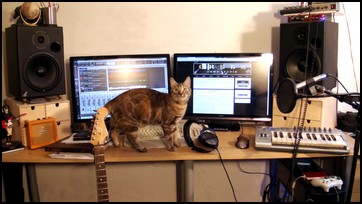

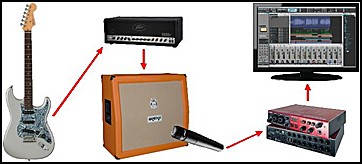

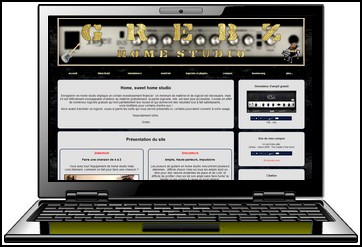

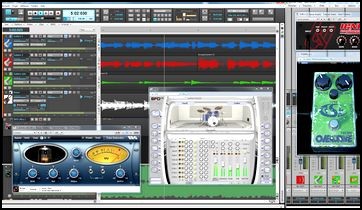

I wrote my first pieces of music on a Commodore Amiga computer back in 1988.
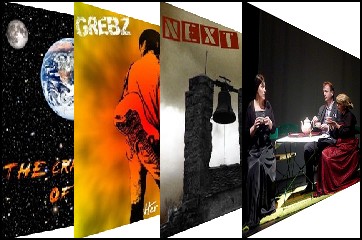
Today, I compose in a Pop-Rock style, with forays into other genres, including orchestral and electronic music. My main goal is to enjoy the process, and if others enjoy listening too, then I’ve succeeded.
I also compose music for theatre plays.



Messages page # 1 2 3 4 5 6 7 8 9 10 11 12 13 14 15 16 17 18 19 20 21 22 23 24 25 26 27 28 29 30 31 32 33 34 35

Doum66
le 20/10/2017 à 09h00
Bonjour et merci pour votre site sur la MAO que je ne connaissais pas il y a encore quelques mois.
Je suis sur PC Windows 10 système 64 bits, séquenceur Reaper. J'aurais voulu savoir comment récupérer les réglages des presets (.fxp). J'ai téléchargé le preset exemple pour les amplis LePou, je l'ai enregistré dans mon répertoire VST, et là je ne sais pas comment récupérer le réglage. Autre petite question, dans le preset, y a-t'il la définition et le réglage des impulsions ? Merci d'avance et encore merci pour toute l'aide que fournit votre site.

Mercenario
le 08/08/2017 à 08h22
Hi, I am from Guatemala, thanks for all the information about music, I am learning here. Cheers !!!!!

seipstar
le 26/06/2017 à 02h21
Bonjour, je fais mes compos avec zommR8 et cubase LE8 (et ma strato)et mes sons leads j'accroche pas alors que c'est justement ceux que je recherche. Une grande variété de sons "légers", non métal ou lourd. Tu aurais un vst à me conseiller ? payant ou gratuit.
Je viens de découvrir ton site c'est juste trop TROP bien, j'ai pris plein de trucs à l'instant mais j'ai pas encore essayé.
Merci d'avance pour ton aide
David
ps: suis sur pc windows 10 64bits 4g de ram
ps2: c'est peut-être le second message que tu reçois car j'ai pas eu confirmation du précédent

Greg1400
le 12/06/2017 à 07h09
Bonjour,
Je débute dans la MAO, je voudrais tout simplement jouer via un irig branché sur mon Mac et avoir des simulateurs d'amplis gratuits (et oui, c'est la crise :-) ). Je pensais qu'avec Audacity et les plugins Lepou ça collerait mais je n'y arrive pas. Je précise bien que je ne veux pas forcément m'enregistrer, mais juste jouer, y a-t-il une solution pour moi ? Je le répète, je suis débutant, merci donc de votre compréhension et de vos explications simples. Musicalement.

Marquee Moon
le 05/05/2017 à 18h02
Bonjour,
Merci pour votre site, récemment découvert, et très bien conçu, et instructif, et joli, et.... j'arrête.
Voilà, j'ai téléchargé LeCab 2 mais je n'arrive pas à le faire reconnaître dans ma STAN (Studio One 3 Pro). J'ai essayé divers emplacements, mais rien n'y fait.
Je suis sous W7 64.
Cordialement, et bonne continuation.
MM
* * * * * * * * * * * * * * * *
<em>Merci de votre visite !
Effectivement, j'ai essayé sur Studio One 2 (je n'ai pas la version 3) et LeCab 2 ne figure pas dans ma liste de plugins. J'ai lu plusieurs messages sur différents sites d'autres personnes qui avaient aussi des problèmes de plantage de LeCab 2 avec Studio One. Peut-être est-ce dû au fait que LeCab 2 n'existe qu'en version 32 bits ?
Je n'ai pas de solution à vous proposer, je vous recommande donc d'utiliser NadIR d'Ignite Amps à la place, qui est un autre chargeur d'impulsions gratuit. Il ne propose de charger que 2 impulsions au lieu de 6, ce qui honnêtement suffit dans l'immense majorité des cas. En revanche, il est disponible en version 64 bits. Je l'ai essayé dans Studio One, et il fonctionne sans problème.
Grebz</em>
